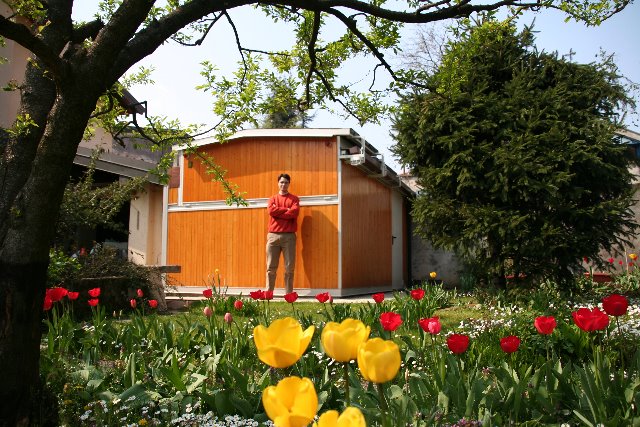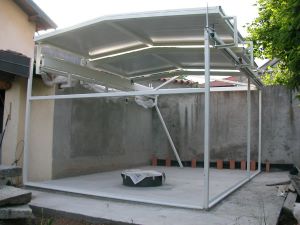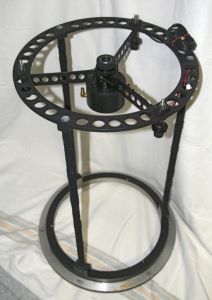 |
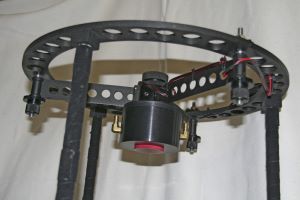 |
The
main
frame
structure that support the ccd camera, with the
spacers in
Duran 50 glass.
|
Detail
of
the
ccd supports. The focusing is achieved using the
three handknobs
on the sides of the supports.
|
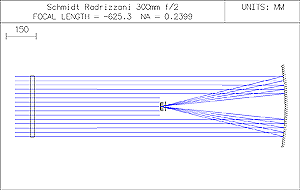
|
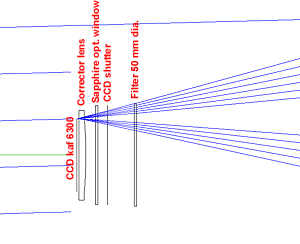
|
Ray-tracing
of
the Schmidt camera, full view.
|
Detail
of
the focus region, with the correcting lens.
The dwawn rays are for
the extreme edge of the ccd, and show that
nearly no vignetting is
present.
|
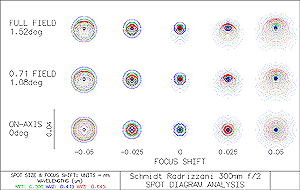
|
|
Spot
diagram
at the focus of the CCD camera. The spots are
absolutely bigger
than the Airy disk, but they are only slight
bigger that one pixel (9
micrometers).
|
|
